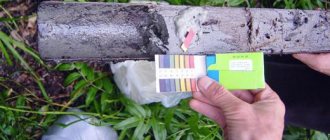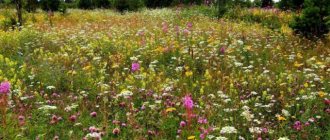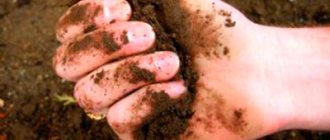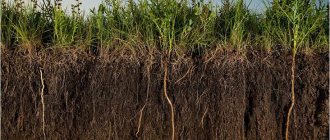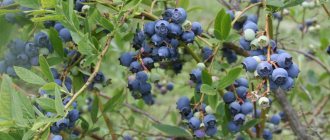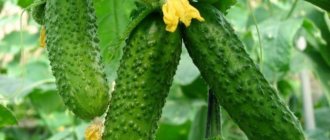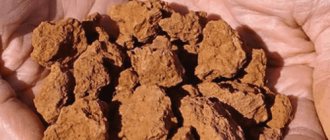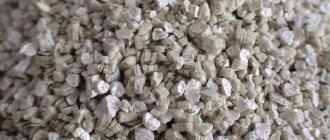In a recent article, I touched on the topic of soil acidity and explained the dangers of a high value of this indicator.
Today I want to highlight in detail ways to independently determine the acidity of the soil - including both simple and free, and those that require some costs. Soil reaction varies greatly from bed to bed and is also affected by changing seasons, harvesting, and so on. Therefore, it is better to carry out measurements using samples from different places in the garden and twice - at the beginning of the season and at its end.
Below is a table of various crops, which are divided into groups according to soil acidity requirements.
As can be seen from the table, if you maintain acidity around 6 pH throughout the garden, this will favor the growth of most garden crops.
Next, I would like to move directly to methods for testing soil acidity at home.
Method No. 1. Litmus paper
This simple acidity analyzer is sold in gardening stores, pharmacies, specialty chemical stores and online. It consists of a number of strips treated with a special reagent that changes color depending on the reaction of the environment. All the necessary data on matching the resulting color and pH level is included in the kit.
The order of your actions is as follows:
- Take soil samples from different depths and from different beds. If you want to calculate the average acidity value for your dacha, simply select soil from different places in random order. Just keep in mind that according to the laws of statistics, the average value will only be reliable if the number of samples is at least 30. Ten samples is the bare minimum, although then there will be a serious error.
- Wrap the selected soil in three-layer gauze and place it in a jar of clean distilled water. It must be purchased separately at the pharmacy.
- Shake the jar of liquid thoroughly and then dip the litmus paper into the water for a couple of seconds until it changes color.
- Determine the acidity using the insert in the kit and repeat this procedure for the remaining samples taken.
How to reduce soil acidity
You probably noticed that special attention is paid to the definition of “acidic soil or non-acidic” and almost nothing about alkaline soils. The fact is that alkalization of the soil in summer cottages and garden plots occurs extremely rarely and you mainly have to deal with high acidity.
A shift in the acid-base balance of the earth to the acidic side occurs due to a decrease in limestone in its composition. Therefore, to reduce acidity, it must be added artificially.
For your information! The most sensitive to soil acidity are all types of cabbage, onions, beets, cucumbers, peppers, cherries, and plums. Garden plants develop better in slightly acidic soils, so only strongly acidic soils need to be limed. It is better to lime the soil in the fall and you should not add lime together with manure and humus, it can enter into a chemical reaction with them.
Table for determining the rate of application of slaked lime
To reduce soil acidity, you can use not only lime. Dolomite flour gives a remarkable result, which, in addition to deoxidizing the soil, enriches it with many microelements necessary for plants.
No less effective and useful is the addition of wood ash and ashes. Even a small amount (100 - 150 g/m) can solve the problem. It is the use of ash and ashes that I usually recommend to reduce the acidity of the soil in flower beds and flower beds. In indoor floriculture, this is also the most acceptable method.
It is also good to deoxidize the soil with dolomite flour, according to the rate indicated on the package.
Method number 5. Vinegar or hydrochloric acid
Next, I will describe several popular ways to measure soil pH. They are not as reliable as various purchased devices and, especially, laboratory tests, but they are cheap and quick to perform .
With this method, you need to lightly water a handful of soil from the garden with strongly diluted hydrochloric acid or ordinary vinegar. If the wetted soil begins to “boil”, that is, small bubbles appear on its surface, then the pH value for this sample is normal. If you still don’t get any reaction, then the soil needs liming.
Using red cabbage
The leaves of red cabbage must be crushed to a pulp, add water and boil over low heat for about half an hour. After the boiling water acquires a purple hue, it will need to be left for several hours and strained. By placing a soil sample in a container (1 teaspoon per 200 ml of solution), you can immediately get the result:
- Purple – neutral soil;
- Blue or green solution - alkaline soil;
- Pink – sour.
Methods for determining soil acidity
Method number 8. Chalk
The method is more complicated than the previous ones, but I consider it necessary to mention it to complete the picture.
You will need: two full tablespoons of garden soil, five tablespoons of water at room temperature, one teaspoon of chalk.
All this stuff is poured into a bottle, onto the neck of which a fingertip (for sewing) is placed, previously removed from the air. The bottle is placed in paper so that heat from your hands does not distort the results of the experiment.
If the soil on your site does not have enough lime (that is, it is acidic), then carbon dioxide will appear in the bottle during the chemical reaction. It will begin to rapidly fill the fingertip and it will straighten up. If the soil has a slightly acidic reaction, the fingertip will only straighten halfway; if it is neutral, it will not straighten at all.
What is soil acidity and why should it be determined?
Each plant prefers its own level of soil acidity. In order to correctly determine the acid-base balance of the earth, you need to have an idea of what it is. In simple terms, this is the ratio of the amount of salts and acids in it. To denote this balance, a well-known combination of Latin letters is used - pH (short for pondus hydrogeni). The numbers that follow it are that very indicator. The lower this number, the higher the acidity of the soil. For land, the following values are usually used:
- alkaline soil – pH7 and above;
- neutral – pH 6.5 – 7;
- slightly acidic – pH 5.5 – 6;
- acidic soil – pH4.5 – 5 and below.
For your information! Garden plants grow better and produce high yields in neutral and slightly acidic soils. Everyone's sensitivity to soil acidity is different. In acidic soils, plants do not absorb nutrients well and their root system does not develop well.
Application of acid primer
- It is important to shake and mix the soil thoroughly before use.
- The soil should be sprayed at temperatures from +10 to +32 degrees Celsius.
- Before applying the phosphating primer, the surface must be especially thoroughly degreased. It is better to do this with rubber gloves so as not to accidentally leave fingerprints.
- To create good adhesion to metal, you need to apply a wet layer of acidic primer.
- It is better that the film thickness does not exceed 8 microns, otherwise adhesion will deteriorate. Usually one wet coat is sufficient.
- According to technology, acid primer is effective on “bare” metal. Getting a small amount of this primer on old paint or putty will not create a problem.
- After applying the acid primer, you need to wait about 10–20 minutes until the primer dries before applying secondary primer.
- No sanding is required before applying acrylic fill primer.
Using vinegar
Test method using vinegar
At a depth of approximately 25 cm, a soil sample is taken, which is placed in a container and filled with table vinegar in a 1:1 ratio. It is important that the soil taken for testing is dry, otherwise the result may be incorrect. Next you should monitor the reaction:
- Zero – acidic soil;
- Stormy , with a lot of foam, hissing and the release of steam - alkaline;
- A small amount of foam – neutral.
Adjusting acidity
If you want to reduce the acidity of the soil, in the autumn you need to dig up the soil and add lime or wood ash to it. In order to reduce alkalinity, you need to add a little organic matter to the soil: peat, rotted leaves, pine needles.
There are many plants that do not feel more comfortable in soil with average acidity. For example, for conifers it is advisable to select soil that is more acidic. Actually, for this reason, in a suburban area it is necessary to artificially form sectors of special acidity for various plants.
After reading the article, you know how to measure whether the earth is acidic or not. Pay special attention at this time, since the efficiency of breeding largely depends directly on the properties and quality of the soil and the needs of the plants.
What types of soils are there?
Soil is considered an important component of the surrounding world and plays a huge role in the life of all living things on our planet. It is in it that the interaction of all layers of the Earth occurs - water, air, underground. The lands with which gardeners, market gardeners, and agronomists most often work are as follows:
- sandy;
- sandy loam;
- loamy;
- clayey;
- peat.
Successfully planting plants means knowing the characteristics of the soil and methods for normalizing its properties through proper cultivation and the introduction of the necessary mineral elements and fertilizers.
sandy soil
This is a light type of soil, which usually consists of sand grains and a small part of clay elements. It allows water to pass through perfectly and is very loose. This type of soil cannot be crumpled into a ball. She's falling apart. Its other properties are high breathability, thermal conductivity, and easy processing. It is difficult to add fertility to such soil. They do not stop there; they go along with the water into the deepest soil layers.
Such lands are poor and not very suitable for growing crops. But growing garden trees, as well as carrots, onions and strawberries on it is quite acceptable. To cultivate sandstone, it is excellent to include peat, humus and clay flour.
Sandy loam type
Such soil is the best in terms of parameters, similar in content to sandy soil, however, it contains a large percentage of clay impurities. If you take a little earth in your palms and squeeze it, you will get a lump. But it doesn't hold its shape tightly. The properties of such soil are more valuable. It retains moisture and mineral elements more strongly, is breathable, does not dry out quickly, heats up better, and is easier to process. You can grow all crops if you fertilize it correctly. Methods for normalizing such soil: adding potassium and organic fertilizers, mulching, green manure and relatively frequent loosening.
Loamy lands
The best type of soil in terms of performance is also called loam. Includes the maximum percentage of nutrients. It stores moisture well and is endowed with the property of separating it across the horizon. Easy to process and keeps warm. This type is perfectly formed into a lump and it is possible to unwind a “sausage”, but it is impossible to bend it into a ring. This is a special technique in agronomy for determining the mechanical composition of the soil. This soil does not need to be improved, but only to retain its fertile qualities, for which purpose it is mulched and humus is added when digging in the autumn.
The soil is clay
The percentage of clayey rocks is up to 80%. Quite heavy and compact, they do not easily absorb water, and when wet they stick to shoes. The construction is lumpy. If you take a lump of wet soil, you can simply shape it into a long sausage and roll it into a ring. This way it will not crack or tear.
Almost looks like plasticine. Consequently, its properties deteriorate: it includes little air, does not heat up well and allows water to pass through. It is difficult to grow garden crops on such soil.
Professional cultivation can help such soil become fertile. For this purpose, lime, ash, compost, and manure are constantly added. Thorough loosening and mulching will also be beneficial.
Acidic, phosphating, etching or reactive primer?
All these names, one way or another, refer to soil that contains acid. In English, there are three different names for acid soils, which are also indicated on packages sold in Russia. Etch or etching primer - etching primer, self etch/etching primer - etching primer, which has ingredients that immediately after the action of the acid are eaten into the metal, creating anti-corrosion protection, wash primer - reactive primer, which also contains acid and, in theory, is intended for application to new metal that does not contain old putty and paint to increase adhesion (especially non-ferrous metals, such as aluminum).
Some acidic soils are not “strong” enough to attack steel. You need to look at the technical specifications of the product.
Different manufacturers have different primer formulas and instructions for use. Initially, etching primers did not contain components that increase corrosion protection and, especially, fillers that fill small irregularities. Nowadays you can find acidic soils from different manufacturers that contain anti-corrosion additives and can be used as fillers at the same time. Most often, however, a good acidic primer is able to chemically act on any metal, preparing it for the next layer of filling primer, and also converts a small amount of difficult-to-clean rust and passivates the surface of the metal, making it inactive to oxidation, and therefore to corrosion.
What acidity do different garden crops need?
The pH level determines the presence of certain microelements in the soil and the degree of their absorption by plants, which affects productivity and susceptibility to diseases.
The table provides information about which vegetable and fruit crops grow on different types of soil.
| Soil acidity | pH | Plants for which these indicators are optimal |
| Strongly acidic | <4 |
|
| Medium acid | 4-5 |
|
| Slightly acidic | 5-6 |
|
| Neutral | 6,5-7 |
|
| Slightly alkaline | 7,5-8 |
|
| Medium alkaline | 8-8,5 | |
| Highly alkaline | >8,5 | The land is unsuitable for gardening and horticulture |
However, this does not mean that if you have one type of soil in your dacha or garden plot, you can plant only a limited set of plants there. There are several ways to make the land suitable for growing any vegetables and fruits:
- Adding acidifying or alkalizing additives directly into the hole during planting. To acidify the soil, you need to use high-moor peat or soil taken under coniferous trees; To shift the acidic pH to the neutral side, an ash-soil mixture is used.
- Preliminary liming of acidic soil on the site with chalk, dolomite flour or slaked lime. Such work is carried out at least two weeks before the planned planting of plants or sowing of seeds. Some crops (carrots, cucumbers, legumes, tomatoes, parsley) are recommended to be planted in the treated area at least after a year, otherwise their harvest will be very poor. If you need to increase acidity, use acidic mineral fertilizers.
Only a specialist can calculate the rate and frequency of application of all of the listed substances after laboratory soil tests. Doing this yourself and “by eye” is categorically not recommended.
How to quickly determine pH
Farmers take soil samples to the laboratory or purchase a pH meter - a device for measuring the level of acids that appear in the soil solution. But this method is extremely inconvenient due to the need to dissolve handfuls of soil in distilled water, and remove soil samples from a depth of 6 cm. In addition, you need to check the soil in the garden in different places, taking samples 5 times at intervals of up to 30 cm.
Since you need to check the acidity of the soil at home quickly and without unnecessary hassles , gardeners use acmus strips, phenolphthalein and methyl orange . These test substances change color in an acidic environment.
It is important to know. All types and varieties of cabbage, beets, garlic and onions feel comfortable in neutral soils. Zucchini, cucumbers, eggplants, peas and potatoes prefer slightly acidic areas. An acidic environment is ideal for pumpkins, carrots and tomatoes.
Ordinary table vinegar will help to carry out a test , for which a handful of earth (1 tsp) is poured with a few drops of liquid on the glass. Bubbles and hissing will appear upon contact with an alkaline medium; if they do not exist, then it is acidic.
You can use red cabbage for the dough. Then the soil solution is filtered using distilled water. Squeeze the juice out of the cabbage and add a few drops of alcohol to it. The solution and cabbage-alcohol liquid are combined. If the color of the tester becomes more scarlet, the soil is acidic; if it turns blue or purple, the substrate is alkaline.
10 blackcurrant leaves you can determine the environment of the earth . In an acidic environment, the infusion will turn red, in a neutral environment it will turn bluish, and in a slightly acidic environment it will turn green.
Weeds also respond to pH, so they can be used to judge which environment is more comfortable for them. Namely:
- in an acidic environment there will be a lot of growth of nettle , creeping buttercup, heather, plantain, common and horse sorrel, pike and pickerel, white and sorrel, buttercup, popovnik, sphagnum and green mosses;
- in a slightly acidic environment you will have to fight with clover, field birch, coltsfoot, odorless chamomile, plantain, dog violet and meadow cornflower;
- a neutral environment is suitable for field bindweed, spring Adonis (adonis), white clover, and sow thistle;
- alkaline - a comfortable environment for white dormancy, field mustard, larkspur and poppy .
Consider the table of soil acidity for plants ( table ):
| 5,3-6,0 | For acidophiles | For plants growing in acidic soil |
| 6,0-7,2 | For neutrophils | For plants that prefer a neutral environment |
| 7,3-8,1 | For basiphiles | For plants that prefer an alkaline environment |
A neutral or slightly alkaline reaction (pH 6.6-7.0) in the soil is suitable for plants: white cabbage and other varieties: parsnips, onions, peppers, beets, celery, asparagus.
A slightly acidic reaction (pH 6.3-6.7) is suitable for plants: beans and eggplants, peas, melons and zucchini, kale, potatoes, lagenaria and loofah, cucumbers, lettuce and beans, spinach. Neutral or slightly acidic soil is loved by garden flowers : roses, primroses, gillyflowers and chrysanthemums.
What plants love acidic soil (list):
- vegetables - potatoes, carrots, radishes, turnips, tomatoes, pumpkin, sorrel;
- berries – lingonberries, blueberries, strawberries, cranberries;
- herbs and flowers - azalea, evergreen erica, heather and hydrangea, rhododendrons and ferns, chicory and conifers.
Types of acidity
Soil acidity is considered one of the main criteria when conducting soil analysis. It is measured in pH, the scale ranges from 0 to 14.
There are 3 types of acidity:
- slightly acidic (earth whose level is greater than pH7);
- neutral (earth, the degree of which is equal to pH7);
- acidic (earth whose degree is below pH7).
The degree of acidity is influenced by the amount of lime in the soil. With small amounts of lime, the soil is likely to become acidic.
The degree of acidity varies at a distance of even 1 meter. For this reason, before planting, take samples every 2 meters, this will allow you to more accurately measure the pH level. For many crops, neutral or slightly acidic soil is better.
